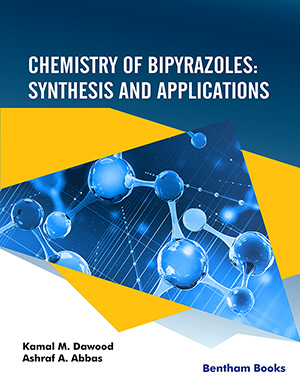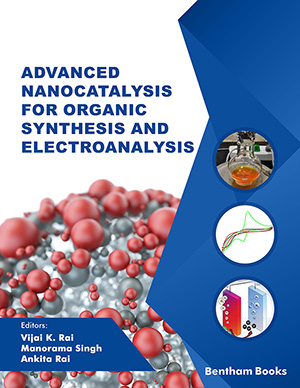
Abstract
Background: Tin-promoted allylation of carbonyl or imino groups is one of the most convenient and efficient methods for synthesis of homoallylic compounds, which are versatile building blocks in the preparation of many biologically active molecules and natural products.
Objective: This review provides an insight into one-pot allylation reactions for the synthesis of different homoallylic compounds promoted by tin powder.
Conclusion: In the last four decades, tin powder-promoted allylation process has been exploited in synthesis of homoallylic compounds. This multicomponent “one-pot” strategy avoids a lengthy separation process and purification of the intermediate chemical compounds, which saves time and resources while increasing the chemical yield. This tin-promoted process has the following features: operational simplicity, good tolerance to functional groups and improved yields. The protocol could be carried out under wet conditions or even in pure water.
Keywords: Tin powder, One-Pot, allylation reaction, allylic bromide, homoallylic alcohol, homoallylic amines.
Current Organic Synthesis
Title:Tin Powder-Mediated One-Pot Protocols for Allylation Reactions by Allylic Halides
Volume: 14 Issue: 8
Author(s): Nibras Ahmed Elaas, Waggas Ahmed Elaas, Danfeng Huang, Yulai Hu*Ke-Hu Wang
Affiliation:
- College of Chemistry and Chemical Engineering, Northwest Normal University, 967 Anning East Road, Lanzhou 730070,China
Keywords: Tin powder, One-Pot, allylation reaction, allylic bromide, homoallylic alcohol, homoallylic amines.
Abstract: Background: Tin-promoted allylation of carbonyl or imino groups is one of the most convenient and efficient methods for synthesis of homoallylic compounds, which are versatile building blocks in the preparation of many biologically active molecules and natural products.
Objective: This review provides an insight into one-pot allylation reactions for the synthesis of different homoallylic compounds promoted by tin powder.
Conclusion: In the last four decades, tin powder-promoted allylation process has been exploited in synthesis of homoallylic compounds. This multicomponent “one-pot” strategy avoids a lengthy separation process and purification of the intermediate chemical compounds, which saves time and resources while increasing the chemical yield. This tin-promoted process has the following features: operational simplicity, good tolerance to functional groups and improved yields. The protocol could be carried out under wet conditions or even in pure water.
Export Options
About this article
Cite this article as:
Elaas Ahmed Nibras, Elaas Ahmed Waggas, Huang Danfeng, Hu Yulai*, Wang Ke-Hu, Tin Powder-Mediated One-Pot Protocols for Allylation Reactions by Allylic Halides, Current Organic Synthesis 2017; 14 (8) . https://dx.doi.org/10.2174/1570179414666170201150313
| DOI https://dx.doi.org/10.2174/1570179414666170201150313 |
Print ISSN 1570-1794 |
| Publisher Name Bentham Science Publisher |
Online ISSN 1875-6271 |
Call for Papers in Thematic Issues
Biorthogonal Chemistry: A translational chemical tool for in vivo applications
After the discovery in 1990, bioorthogonal chemistry encompassed a set of diverse fast-paced selective chemical reactions, facilitating the study of biomolecules under physiological aura without intervening in the biochemical processes. Over the past two decades, significant progress has been witnessed in bioorthogonal reactions such as Staudinger ligation, metal-catalyzed coupling reactions, ...read more
Design and Synthesis of Green Pesticides
The development of green new pesticides is currently one of the hotspots in the field of pesticide research, aiming to develop efficient, environmentally friendly, and safe pesticide products to meet the needs of modern agricultural production. Green new pesticides prioritize environmental friendliness and ecological safety. Therefore, during the research and ...read more
Exploring the Role of Chemical Graph Theory in Advancing Current Organic Synthesis
Organic synthesis is a fundamental discipline in chemistry, crucial for the creation of complex molecules with diverse applications in pharmaceuticals, materials science, and beyond. However, the process of designing efficient synthetic routes for target molecules remains challenging. Chemical graph theory, a branch of theoretical chemistry, offers powerful tools for understanding ...read more
Novel Green Approaches in the Synthesis of Bioactive Molecules
This special issue regards several aspects of green chemistry, focusing on innovative strategies to run organic synthesis reactions in a more environmentally friendly. Interesting articles or reviews about the critical role of green methodologies in reducing the environmental impact of chemical processes are welcome. Moreover, novel methodological studies using sustainable ...read more
Related Journals
 25
25 1
1 1
1
- Author Guidelines
- Graphical Abstracts
- Fabricating and Stating False Information
- Research Misconduct
- Post Publication Discussions and Corrections
- Publishing Ethics and Rectitude
- Increase Visibility of Your Article
- Archiving Policies
- Peer Review Workflow
- Order Your Article Before Print
- Promote Your Article
- Manuscript Transfer Facility
- Editorial Policies
- Allegations from Whistleblowers

























